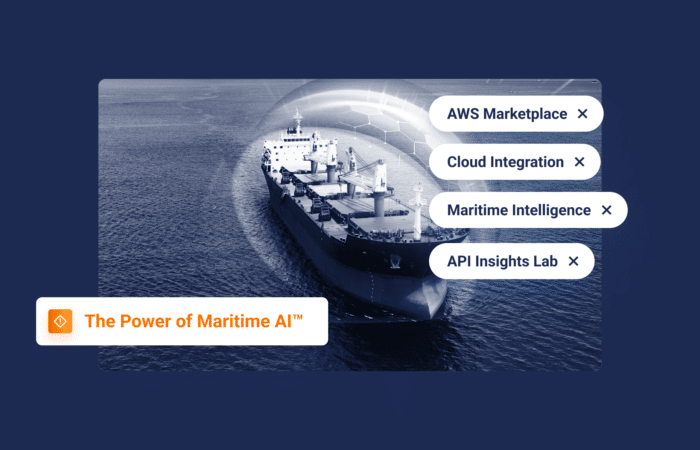What’s inside?
By Irit Sella, PhD, Data Scientist, Windward
Following the minimal improvement in ocean freight reliability this year, average delays continue to be high, significantly impacting the entire supply chain and causing losses of up to $10B. The supply chain ecosystem – including logistic service providers, hundreds of thousands of freight forwarders, cargo owners, shippers, container ports, terminals, liners, and more – must be prepared to manage more than 816 million TEUs (twenty-foot equivalent units) of containers shipped yearly amidst this uncertainty.
A Major Supply Change Challenge
One of the major challenges in the supply chain is predicting the estimated time of arrival (ETA) of a vessel to the port where containers will be discharged (POD). Based on Windward’s experience, deep learning can predict the ETA up to 45 days ahead of a ship’s arrival, and up to 20 ports ahead.
This is critical, given that 40% of all shipments globally pass through transshipment ports, rendering numerous contingencies for failure during this complex chain of operations. If one of the vessels transporting the container is delayed along the way, it will likely throw off the rest of the chain.

The Difference Between Container ETA & Vessel ETA
It’s important to differentiate between container ETA and vessel ETA: let’s look at an example of one container’s journey, where different vessels transport the container from the original port of loading (POL), to the POD. In a classic transshipment scenario, container X will leave the original POL on vessel A, travel to a transshipment port, be discharged from vessel A, and loaded onto vessel B, which will transport it to the final POD. In more complex scenarios, there could even be one or two more intermediate ports. One container, multiple vessels. This is why multiple vessel ETAs must be calculated to determine a container’s ETA.
Vessel ETA relates to the time a vessel berths at the destined terminal, while container ETA is more complex and intricately related to operational planning. Container ETAs often need to account for more than one vessel (transshipments) and allow sufficient time for transshipment operations. Additionally, container ETA, and subsequently, container offloading, are closely monitored to ensure efficiency during landside operations. The gap between vessel berth and container offloading can be 2-4 days in many cases.
Going Deeper on Deep Learning – How it Works
Our previous blog post in this series explained how challenges like the ones described above can be better managed by using deep learning technology. But how does deep learning actually work?
Raw data – dynamic information about the journey – is fed to the model to predict vessel ETA (the output). This includes leveraging cleaned, normalized AIS data, such as vessel speed and current location, against the real-time distance from the POD. Sophisticated deep learning models for ocean freight visibility can consider which carriers the containers belong to, the carriers’ predicted schedules, ships’ historical behavior, port congestion, and vessel turnaround efficiency.
Other important factors include port calls by all container vessels that recently called ports that are relevant to a given shipment, the number of containers that are offloaded (40 vs. 4,000 is a big difference, for instance), and of course, the weather forecast: including wave height, wind speed, and more.
With about 40,000 port calls per month globally, the volume of data that needs to be considered in real-time is huge. All of this data is used to create the fullest picture possible, and the most accurate output. Disparate data points are structured and translated into artificial intelligence (AI) language and then put into a transformer – the most cutting-edge neural network architecture for reasoning. The model is able to “digest” this high volume of data and learn hidden connections between the different types of data. At the end of these processes, ETAs for all relevant vessels, as well as for the container ETA, are predicted.
When the deep learning model is trained, experts in the maritime industry, and specifically the supply chain, are essential to structure the model and understand which factors are important to solve the specific logistics-related challenges, ensuring the model learns from the right foundations and quickly becomes capable of generating the most accurate insights.
Why Choose Deep Learning for Overcoming Maritime Supply Chain Obstacles?
With more than 90% of all shipments going by the ocean, the ocean leg of the journey accounts for half of the total transportation time, so any delays end up strongly impacting the container’s arrival time. It’s critical to take back control to optimize your supply chain with full ocean freight visibility.
Deep learning is capable of processing huge amounts of raw data and producing ETAs based on connections and patterns that would elude even the most brilliant humans. Experts cannot incorporate real-time data from all shipments globally (even if experts could do it, who has a dedicated group available to constantly track multiple shipments?). AI can. Early and accurate ETAs turn into actionable insights, enabling you to gain control over this complex endeavor.
Stay tuned for part 3 of this blog series, where we’ll take a deeper look at how to define port calls, the accurate mapping of ports and terminals, and measuring congestion based on transit times.





